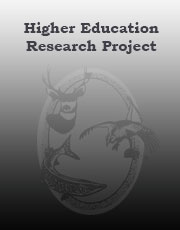Habitat Resource Selection by Greater Sage-grouse within Oil and Gas Development Areas in North Dakota and Montana
Description
Populations of greater sage-grouse (Centrocercus urophasianus; hereafter sage grouse) have declined substantially throughout a majority of their range (Connelly and Braun 1997, Schroeder et al. 1999, 2004). There has also been a corresponding decline in sage (Artemisia spp.) habitat quantity and quality. Consequently, sage grouse populations have declined in response to a pattern of land-use changes that have reduced and degraded sagebrush ecosystems (Hemstrom et al. 2002). Sage grouse are native to the sagebrush steppe ecosystem, and their distribution closely follows that of sagebrush. Important mineral resources (i.e., gas, oil) are coincident with sage grouse habitats across much of the western United States. Sagebrush steppe habitats along the Cedar Creek Anticline of southeastern Montana and southwestern North Dakota exemplify important sage grouse habitats that overlay mineral resources which are currently being extracted, or have been targeted for development. There are many concerns involving the responses of sage grouse and their use of habitats that have been, or potentially will be impacted by mineral development and associated infrastructure (i.e., roads, power lines, buildings, generators, water outflows). The primary objectives of this study were to: (1) determine the habitat suitability within the oil and gas developed regions of Bowman County, North Dakota and Fallon County, Montana and (2) determine what factors may cause avoidance.
Vegetation measurements were taken at 67 nest sites and 166 random sites between 2005 and 2009 and analyzed using an Information Theoretic approach with logistic regression. The top model that predicted sage grouse use included total percent vegetation cover, the visual obstruction at the nest bowl, the visual obstruction at one meter away from the nest bowl, 0-m VOR, 1-m VOR grass height, and year affect (AICc weight = 0.54). When I compared the area of intense use to areas of relative non-use, I found that there were four competing models; the top model included total percent vegetation cover and grass height (AICc weight = 0.25). When I compared density of roads I found that the area of avoidance contained 120.9 km (0.0317 km/ha) of roads whereas the area of use had 44 km (0.014 km/ha) of roads. Hence, the density of roads within the area of avoidance was about 2.6 times greater than the density within the area of use.
Active/Archived:
Archived
Related Links:
Metadata
Type
Research papers
Research Category
Energy Development
Habitat
Target Species
Greater Sage-grouse
Approximate Completion Date
Formats
PDF
Contact

